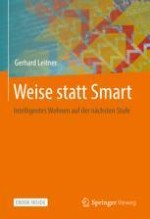2022 | OriginalPaper | Buchkapitel
6. Methodische Fundamente des Wise Konzepts
verfasst von : Gerhard Leitner
Erschienen in: Weise statt Smart
Verlag: Springer Fachmedien Wiesbaden
Aktivieren Sie unsere intelligente Suche, um passende Fachinhalte oder Patente zu finden.
Wählen Sie Textabschnitte aus um mit Künstlicher Intelligenz passenden Patente zu finden. powered by
Markieren Sie Textabschnitte, um KI-gestützt weitere passende Inhalte zu finden. powered by
